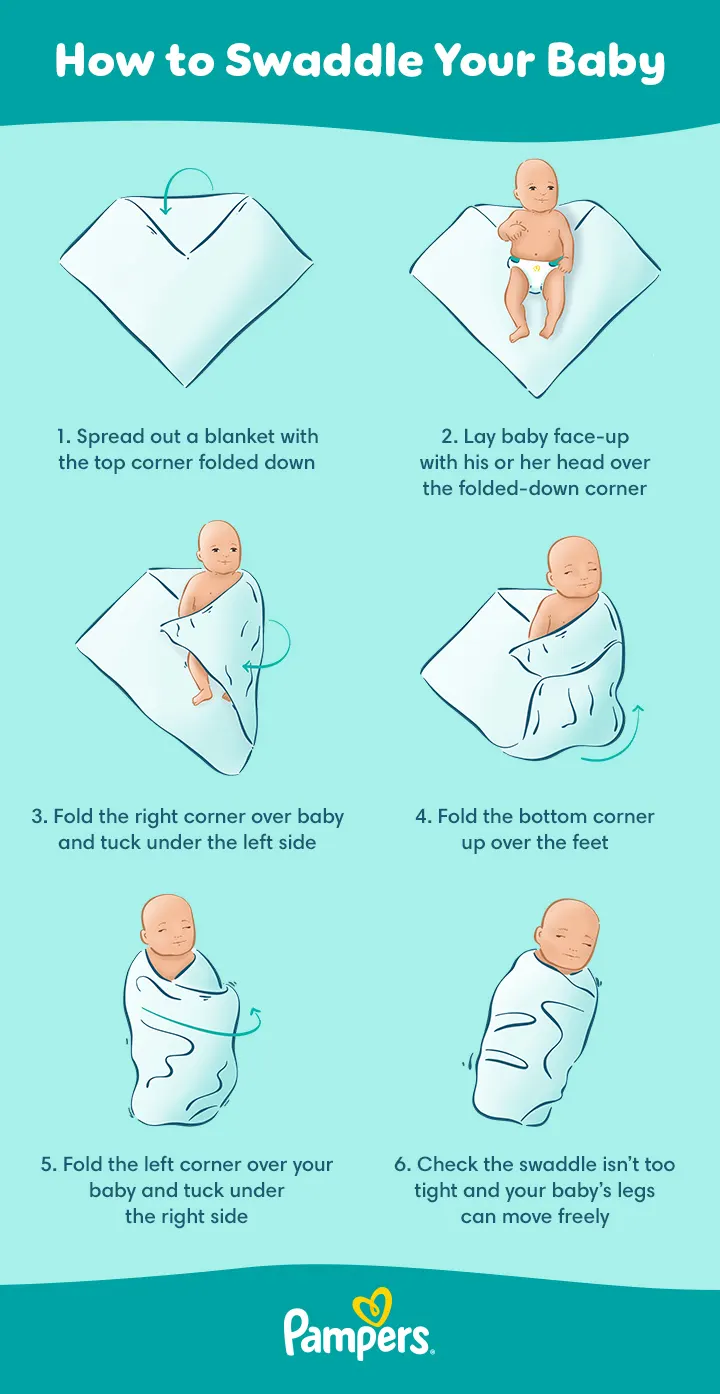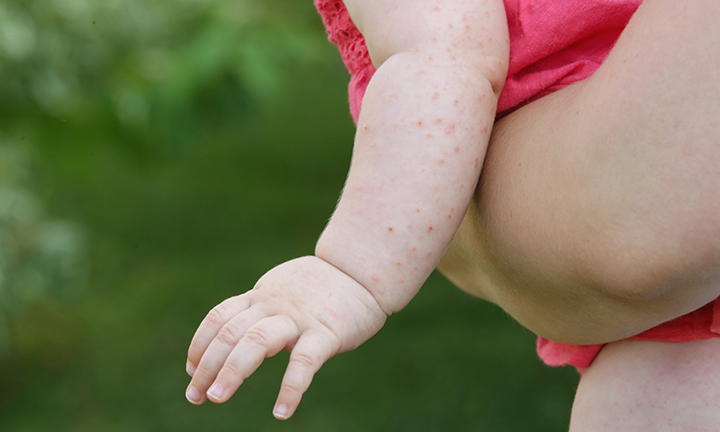
Moro Reflex in Newborns
2 min readUpdated March 18, 2022
2 min readUpdated March 18, 2022
The Moro reflex, also known as the startle reflex, is one of several reflexes that your newborn comes into the world with. Read on to learn more about the Moro reflex, how to calm your baby if necessary and how long this reflex lasts.
What Is the Moro Reflex?
The Moro or ‘startle’ reflex is an automatic or involuntary movement – referred to as a reflex – in newborns, in which your baby suddenly throws their head back, cries, and extends out their arms and legs with their fingers outstretched, before pulling their arms and legs back in.
The Moro reflex usually occurs in the following instances:
Is There a Way to Calm Your Baby’s Moro Reflex?
In some instances, your baby may startle themselves awake during sleep because of the startle reflex. To prevent this, you could consider gently wrapping your baby in a blanket at bedtime. This is called swaddling, and it may help to calm and soothe your baby. If you are considering swaddling, always follow safe swaddling guidelines to ensure your little one is safe and happy. See the image below for a step-by-step, how-to guide:
At What Age Does the Moro Reflex Go Away?
The startle or Moro reflex usually shows in your baby in their first days or weeks, peaking in their first month, before disappearing after 2 or 3 months old.
Eventually, as this type of newborn reflex disappears, your baby’s movements will become more controlled and intentional.
How to Test for the Moro Reflex
Your midwife will test your newborn shortly after birth for reflexes. They will do this by first watching your baby to see if the startle reflex is present. If they can’t see the Moro reflex initially, they will perform a simple test to encourage it.
To do so, they will gently allow your baby’s head to fall back slightly, in a safe way. Your baby may then throw out their arms and legs and will most likely cry a little. After this, your baby will draw their arms and legs back in again and eventually relax. This response shows that your baby’s reflexes are working well.
When Should You Worry About the Moro Reflex?
Babies develop at their own pace, so what seems like a longer-lasting Moro reflex isn’t necessarily anything to worry about – the reflex can go away at any time in the first few months. Speak to your health visitor if you’re concerned about this or any aspect of your child’s development.
Your baby’s well-being will be checked regularly by your health visitor during your baby’s health and development reviews. During each review, your baby’s development and growth will be documented, ensuring that any delays or issues can be identified and managed promptly.
If your midwife or health visitor have any concerns about your baby’s Moro reflex, they will let you know and provide you with the support or referral needed.
Read more about your newborn baby’s development.
FAQs at a Glance
The Moro or startle reflex is an involuntary reflex in newborns in which your baby suddenly throws their head back, extends their arms and legs outstretched and cries, before bringing their arms and legs back in. This usually occurs when your baby is startled by a loud noise.
The Bottom Line
The Moro reflex is an involuntary ‘startle’ reflex that your baby has as early as their first few weeks, lasting until about the time they are 2 or 3 months old. It will eventually disappear and your little one’s movements will become more controlled.
Sometimes babies may have the Moro reflex at night during sleep. To help prevent your baby from startling themself awake, you could consider gently and safely swaddling them.
During your baby’s health and development reviews, your health visitor will test for and keep track of your baby’s development and health, including the Moro reflex. Your newborn is growing and learning each day, so enjoy each special moment as their reflexes develop in to more deliberate movements.
How We Wrote This Article
The information in this article is based on the expert advice found in trusted medical and government sources, such as the National Health Service (NHS).The content on this page should not replace professional medical advice. Always consult medical professionals for full diagnosis and treatment.
The information in this article is based on the expert advice found in trusted medical and government sources, such as the National Health Service (NHS).The content on this page should not replace professional medical advice. Always consult medical professionals for full diagnosis and treatment.
Read more about Baby
Related Articles
Join Pampers Club and get:
















